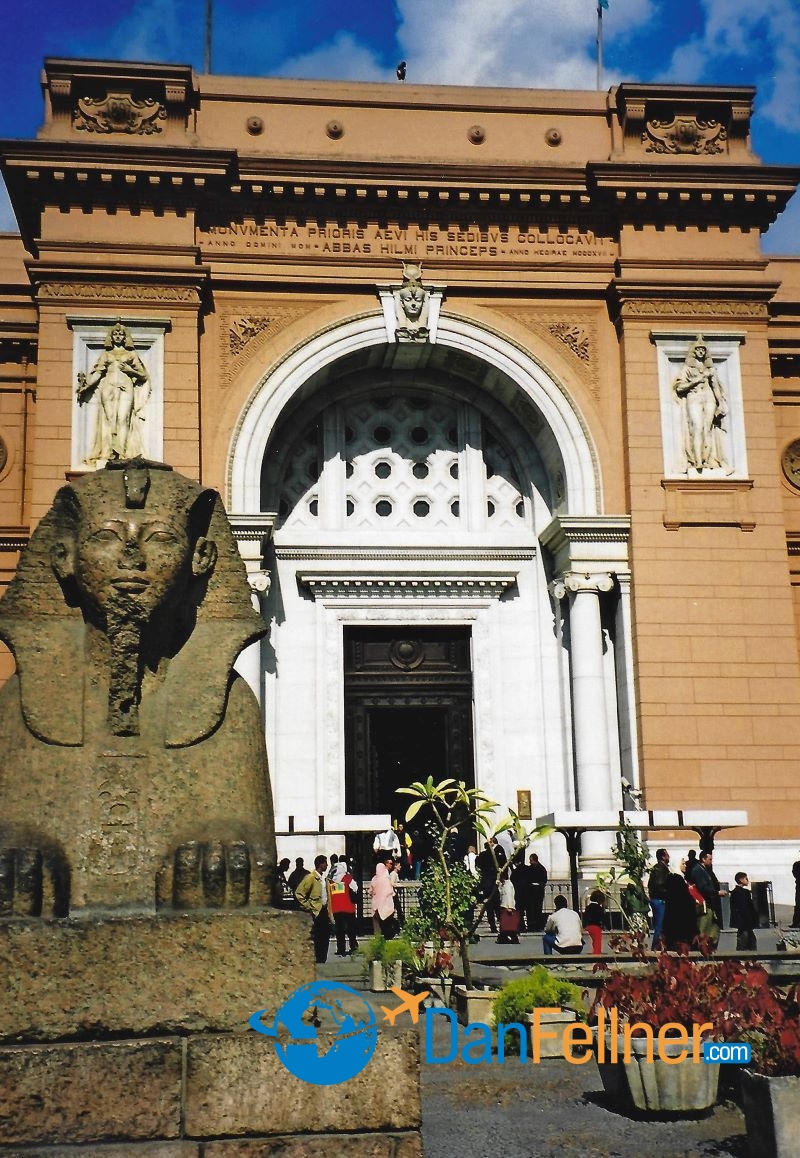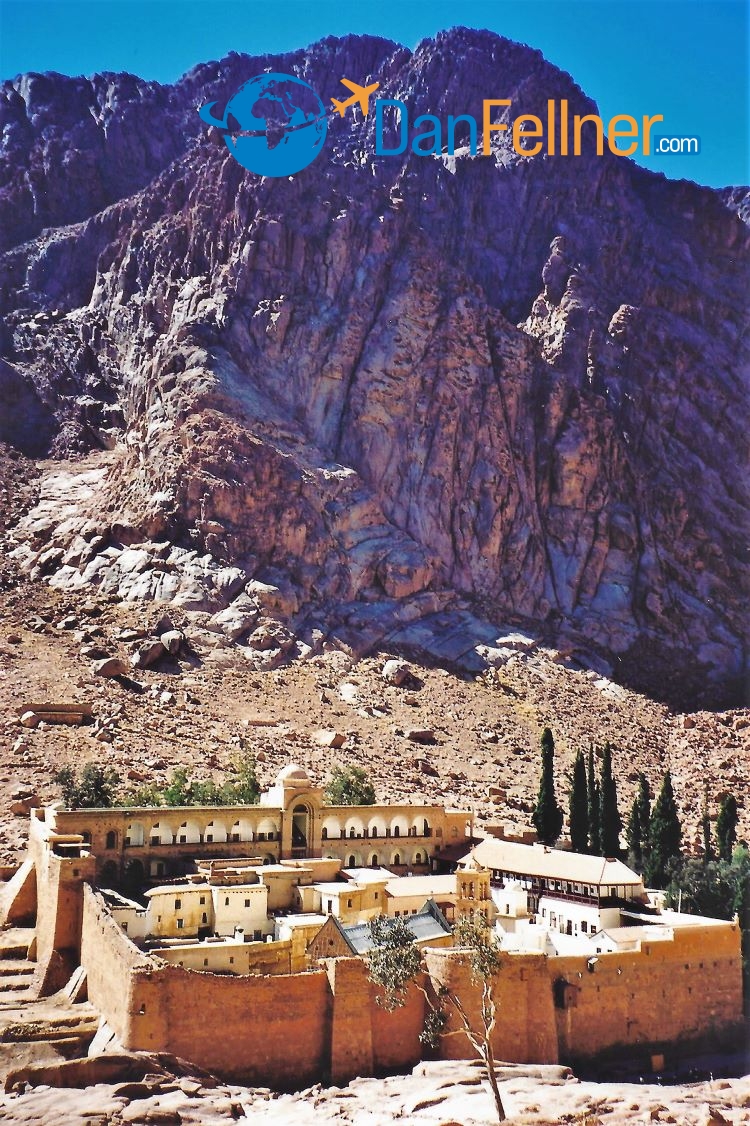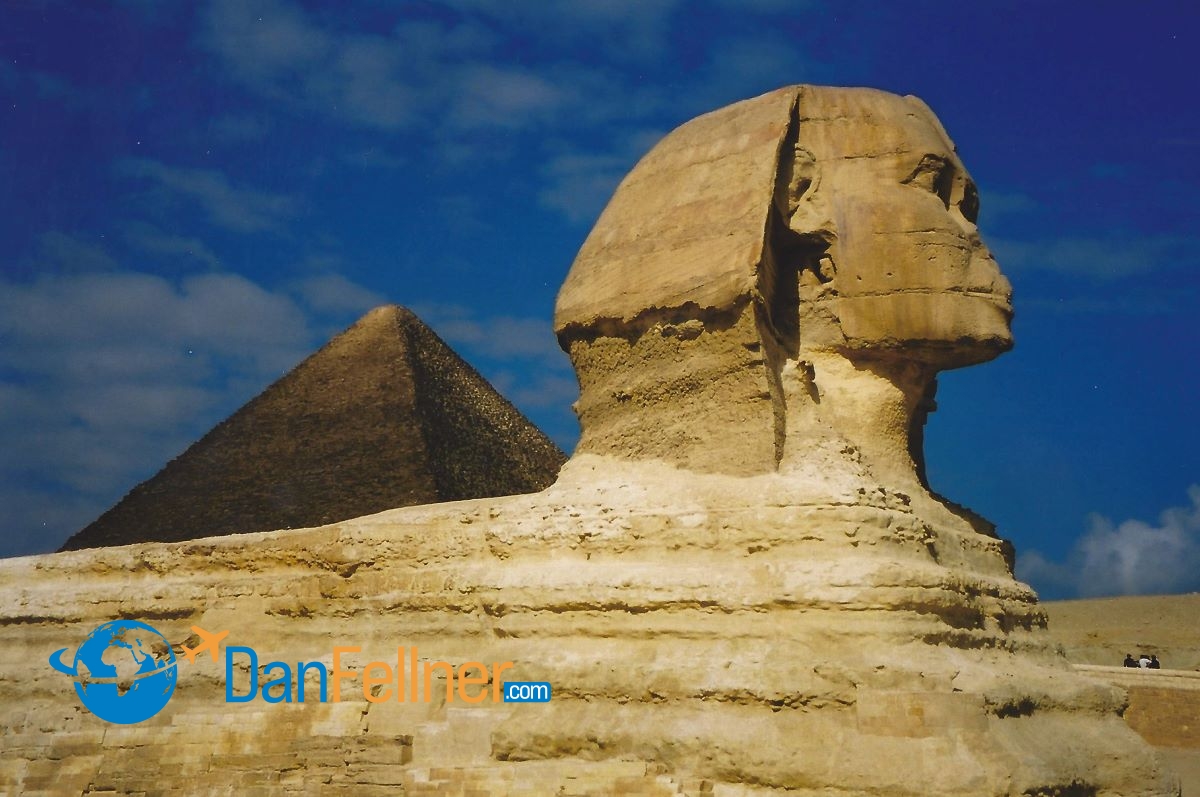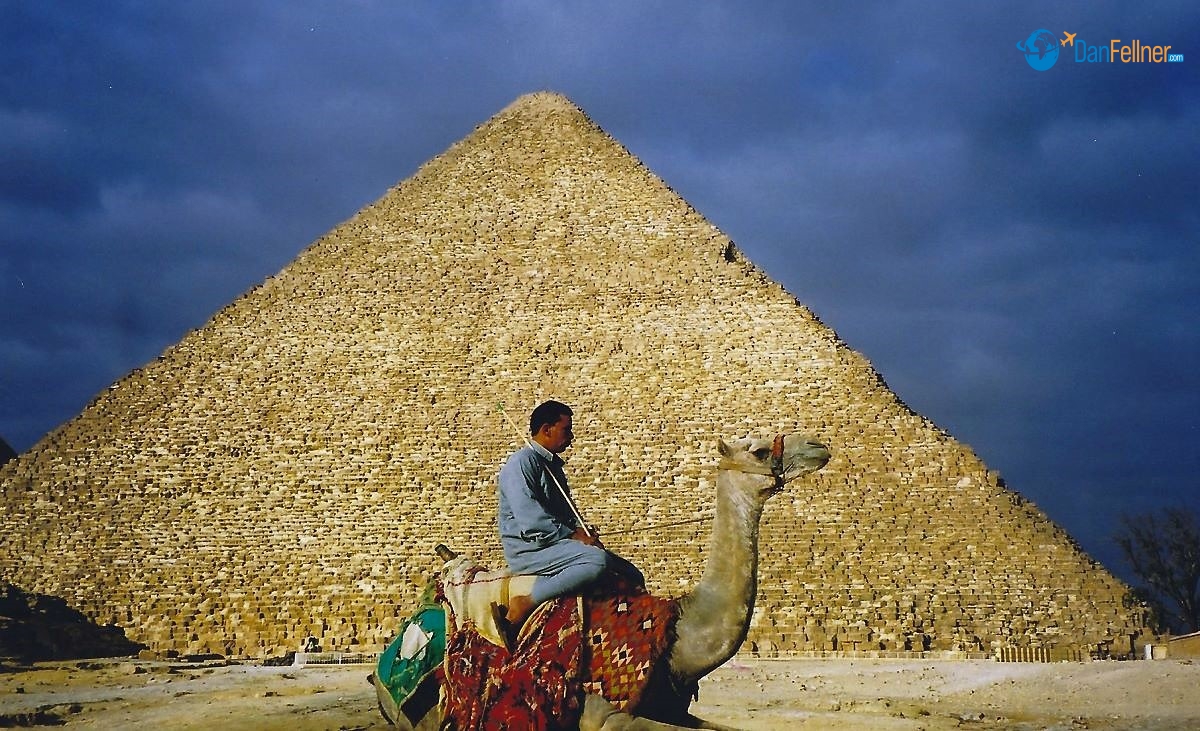Pyramids, scenery and Biblical sites make security hassles tolerable
East Valley Tribune – April 28, 2002
The line to enter Cairo’s famous Egyptian Antiquities Museum is moving slowly and I wonder why it is taking so long to get inside the building that houses the treasures from King Tut’s tomb and other antiquities.

Cairo’s Egyptian Antiquities Museum.
As I finally reach the head of the line, I display my ticket and pass through a metal detector. Something in my pocket – perhaps my hotel room key — sets off an alarm and I am thoroughly hand-frisked by police.
It’s then that I realize that the line was just to enter the museum’s outer courtyard. There’s another long line to enter the building itself, and I must undergo the entire process once again, including another hand-search.
It’s security as intense as I’ve encountered at any airport. And it’s something visitors to Egypt will experience over and over again.
Heavily armed police, military personnel and metal detectors are as pervasive in tourist areas as postcards of the pyramids in souvenir shops.
Given recent history, it’s not hard to understand why.
Fifty-eight tourists were killed in 1997 when ambushed by sniper fire from Islamic extremists outside of a temple in Luxor. Then came Sept. 11, 2001, which further frightened Americans and Europeans from visiting Islamic countries. As a result, Egypt’s tourism industry – a vital part of the country’s economy – is deeply hurting.

Khufu’s Pyramid in Giza, also known as the “Great Pyramid,” is the only remaining wonder of the seven wonders of the ancient world.
There haven’t been any security incidents involving tourists in Egypt since the Luxor attack and the Egyptian government is determined to win back the confidence of travelers by ensuring the five-year safety streak continues.
While the heavy security can be a bit unnerving and lead to long lines in some places, Egypt offers those who do come first-class resorts at bargain prices, colorful desert scenery, excellent diving and snorkeling in the Red Sea, sites with important Biblical significance, and of course, the pyramids.
One of the main hubs of Egyptian tourism is perpetually sunny Sharm el-Sheikh on the southeastern coast of the Sinai Peninsula. Many visitors use “Sharm,” as it’s commonly known, as a base from which to explore the rest of Sinai and Cairo.
The Sinai is a sparsely populated peninsula about the size of West Virginia that links Africa with the Middle East. It was through Sinai that the Israelites reached the Promised Land following their exodus from Egypt and through Sinai that Islam reached Africa.
More recently, the peninsula was controlled by Israel during most of the period from 1967 until 1982, when it was returned to Egypt following the Camp David peace accords. Today, visitors are warned not to venture into the desert without a local guide as there are still landmines remaining from the wars with Israel.

A Bedouin treks through the Sinai Peninsula.
During the last 15 years Sharm has grown to become a popular spot for Italians and northern Europeans on vacation packages. Indeed, you are just as likely to hear Italian or Russian being spoken in tourist areas as the native language of Arabic.
The area’s biggest attraction is spectacular diving and snorkeling in the Red Sea, which is warm enough to swim in year-round. Some claim that Sharm offers the most attractive shoreline coral reefs in the northern hemisphere.
The town of Na’ama Bay is the heart of Sharm’s tourist area. Na’ama, which means “God’s blessing” in Arabic, boasts a white sand beach, numerous diving facilities, souvenir shops, restaurants and nightclubs. You’ll find a Hard Rock Café, Planet Hollywood and McDonald’s. But you won’t find much in the way of authentic Egyptian life.
For a glimpse of that, you can head out to the desert and ride camels and break bread with the Bedouin, Sinai’s native inhabitants. About 11,000 Bedouin live in this part of Sinai, and many now make a living offering tourists camel rides and buffet dinners of lamb and chicken.
While aboard your camel, you’ll trek through scenery that somewhat resembles Sedona, with jagged, red and brown mountains and dramatic rock formations.
Sinai’s most famous mountain is Mt. Sinai, about 150 miles northwest of Sharm.

St. Catherine’s Monastery at the foot of Mt. Sinai in Egypt.
It is at the summit, according to the Old Testament, where Moses received the Ten Commandments from God.
Mt. Sinai, known by the locals as Jabal Moussa (“Mountain of Moses”), is 7,500-feet high. There are hiking trails to the top and many choose to begin the several-hour trek in the middle of the night so that they can be at the summit in time to watch the sunrise.
At the foot of Mt. Sinai is St. Catherine’s Monastery, the oldest working Christian monastery in the world.Founded in the 4th century AD, the monastery today houses 25 Greek Orthodox monks.
Built inside of a fortress, the monastery features several interesting sites, including the burning bush of Biblical fame, where it is believed God spoke to Moses. Those with a morbid streak will enjoy going inside a building called the Skull House, which is full of bones of deceased monks.
St. Catherine’s has cramped quarters, narrow walkways and wall-to-wall tourists. After about a half-hour, I was more than ready to escape outside to the hills adjacent to the monastery for dramatic views of the complex and Mt. Sinai.
Visiting Egypt and not seeing the pyramids would be like going to China and not seeing the Great Wall. The most famous pyramids, those of Giza, are located just outside of Cairo.
To get there from Sharm, you can take a 45-minute flight fly to Cairo. For the more budget-minded traveler, a bus ride takes about six hours. Along the way, you’ll cross the Suez Canal via a one-mile underwater tunnel that takes you from Asia to the African mainland.
With a population of about 15 million people, Cairo is Africa’s largest city and has horrendous traffic problems. In some parts of the city, you’re just as likely to be competing for road space with a donkey-cart as a car or truck. It’s worth enduring Cairo’s chaos for at least a couple of days for the chance to experience some of the most fascinating historical sites in the world.
Giza, on the west bank of the Nile River about 45-minutes from downtown Cairo, features three main pyramids. The oldest and largest, Khufu’s Pyramid, is also known as simply the “Great Pyramid.” It is the only remaining wonder of the seven wonders of the ancient world.
It took about 20 years and more than 100,000 workers to build the Great Pyramid for Khufu, who reigned as pharaoh more than 4,500 years ago. The structure has 2.3 million blocks of stone, each weighing several tons.
While the pyramid is showing its age – much of its outer material has been stripped away by erosion and vandals – it still brings gasps of awe to those who see it for the first time and rightly stakes a claim as one of mankind’s most important architectural achievements.
The Great Pyramid is flanked by two smaller pyramids, Khafre’s Pyramid, built for Khufu’s son, and Menkaure’s Pyramid, built for his grandson. Less than a mile away and part of the same complex is the famous Great Sphinx, which represents a lion with a human head wearing the traditional headdress of the pharaohs.

The Great Sphinx, which represents a lion with a human head wearing the traditional headdress of the pharaohs.
There are those who believe the pyramids offer mystical healing powers. Some New Age devotees come from all over the world to meditate here.
But it’s difficult to find peace and tranquility at the pyramids. Hawkers are constantly in your face, peddling everything from camel rides to postcards.
A bit more serene, the Egyptian Antiquities Museum offers an interesting glimpse into the ways of the ancient pharaohs. The museum has more than 100,000 relics and antiquities spanning from the Old Kingdom to the Roman Empire. That means if you spend only one minute at each exhibit, it will take you nine months to make your way through the entire collection.
With a good guide, though, you can see the highpoints in a couple of hours. The museum is best known for its collection of royal mummies and the well-preserved findings from the tomb of Tutankhamun, which drew huge crowds when they toured the U.S. a few years ago.
According to our guide, King Tut was a “big zero” as a ruler, which may explain why he lasted only nine years on the throne before he died of mysterious causes – most likely by poison — at the age of 18.

An Egyptian smokes a water pipe in Cairo’s medieval marketplace.
But his tomb did leave behind a plentiful crop of fascinating relics, including the much-photographed gold funerary maskdesigned to be an exact likeness of the boy king.
A great place to wind up your visit to Cairo is the medieval marketplace of Khan al-Khalili, which dates back 700 years. It’s easy to get lost in the twisting maze of streets and alleys lined with hundreds of shops and cafes, where you’ll see Egyptians playing backgammon and smoking shisha, or water pipes. Gold, silver, wooden crafts and perfume are big sellers here.
Many travelers are understandably skittish about visiting a country like Egypt now, but the U.S. State Department has issued no travel warnings for the country. Even so, it does urge Americans “to be vigilant and exercise good security practices while in Egypt.”
I had no problems at all, and found the Egyptians to be welcoming and friendly. The heavy security may have slowed things down a bit, but for a chance to see ancient wonders that have endured for thousands of years, no one seemed to mind.
© 2010 Dan Fellner

